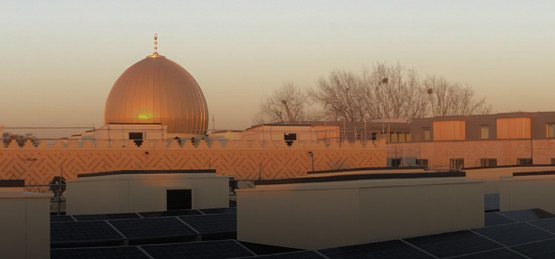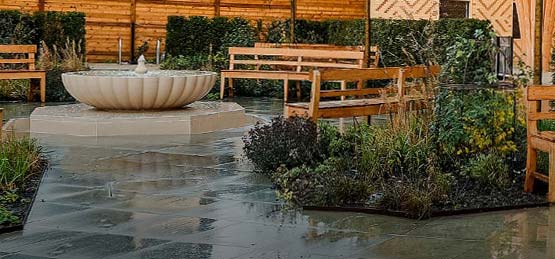A British mosque for the 21st century
The Cambridge Central Mosque design was inspired both by Islamic and English religious architectural traditions. Above all, we sought to develop the idea of a British mosque for the 21st century: as Abdal Hakim Murad, chairman of the Cambridge Mosque Trust, remarked, “creating a brand new sacred space has been the main challenge, to bring together something that’s very ancient and timeless with the very latest technologies.” More than ten years of dedicated work has resulted in a pioneering mosque, one that seems to have grown organically out of the landscape and celebrates our shared love of beauty.
In 2009, Marks Barfield Architects won the competition to design the building with their concept of the mosque as a calm oasis within a grove of trees. With the collaboration of UK-based specialists such as the geometer Keith Critchlow, garden designer Emma Clark, and artists Amber Khokhar and Ayesha Gamiet, among others, the final design marries traditional Islamic architecture, geometry and horticulture with indigenous English materials, plants and craftsmanship to create a unique synthesis.
The defining feature of Cambridge Mosque is its timber structure. The columns, or ‘trees’, reach up to support the roof in an interlaced octagonal lattice vault structure evocative of English gothic fan vaulting, famously used at the nearby King’s College Chapel. The timber is sustainably sourced spruce which has been curved and laminated. Roof lights are located above the ‘trees’, bathing the prayer hall in light. The octagonal geometry has strong symbolism in Islamic art, suggesting the cycle of inhalation and exhalation – the ‘Breath of the Divine’.
Worshippers and visitors enter via an Islamic garden before passing through a covered portico and then an atrium, preparing them gradually for the contemplation of the prayer hall, facing Mecca. This combination of gardens with whispering fountains and vaulted prayer spaces has been used to great effect throughout Islamic history – for instance, at the Alhambra – and it reminds us of the interconnectedness of humans and the natural world. The gardens enhance the feeling of an ‘oasis’ that the building as a whole embodies. Even the roofs are green!




